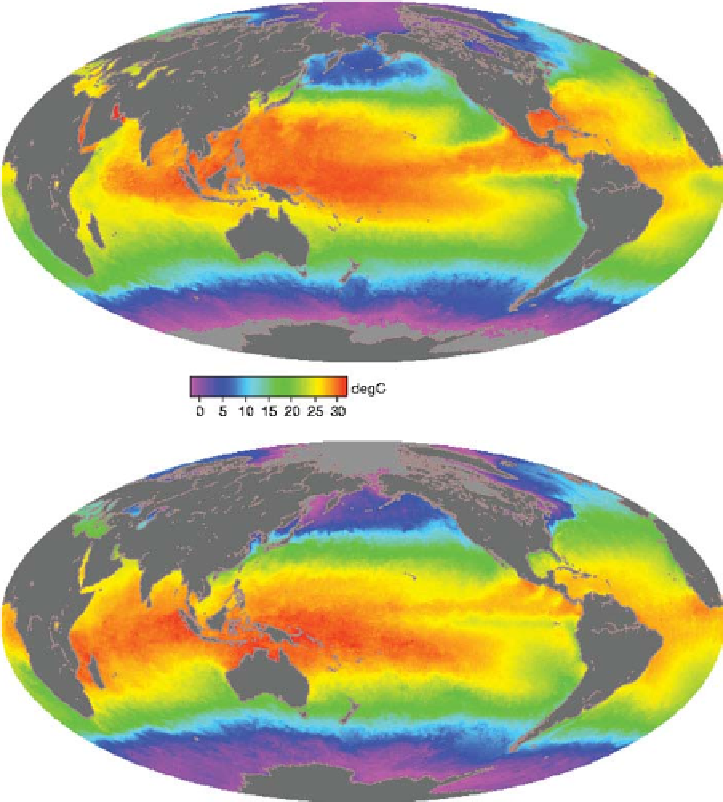Geoscience Reference
In-Depth Information
Figure 5.8 Global sea-surface tempera-
tures during June and December 2000.
Although the seasons differ dramatically be-
tween the images, notice the similarity in the
geographic pattern. For example, the sea-
surface temperature in the eastern Pacific
shows a small change between the months.
Temperatures are in the Celsius scale and
are coded by color, as indicated by the
horizontal bar between the maps.
PODACC
(a)
PODACC
(b)
At continental localities like Topeka, however, the sur-
rounding landmass does not store as much thermal energy as
oceans do, largely because of their low specific heat; that is, the
land temperature starts to rise after absorbing relatively small
amounts of energy. In addition, radiation does not penetrate to
great depths in landmasses. As a result, continental localities
exhibit dramatic annual temperature variations compared to
maritime places. This pattern not only exists over the course of
the year, but can also be seen in the daily cycle of temperature
(Figure 5.9).
45
40
35
30
25
20
15
10
5
Las Vegas
100
80
San Diego
60
40
Other Local Factors That Influence Temperature
In
addition to the maritime vs. continental effect and urban impact
on temperature, a variety of other variables can influence tem-
perature. These variables include altitude, the position of topo-
graphic barriers, and wind flow patterns. Altitude influences
temperature because, as we saw in Figure 5.1b, temperature
tends to decrease with increased elevation. As you will see in
Chapter 7, topographic barriers such as mountain ranges can
have a significant impact on temperature that goes beyond the
simple variable of increased altitude. In areas where wind de-
scends a mountain range, temperature can warm considerably
0
Figure 5.9 Daily cycle of temperature at San Diego, California,
and Las Vegas, Nevada, from July 1 to July 5, 2003.
San
Diego is a maritime city, whereas Las Vegas is located deep within



































